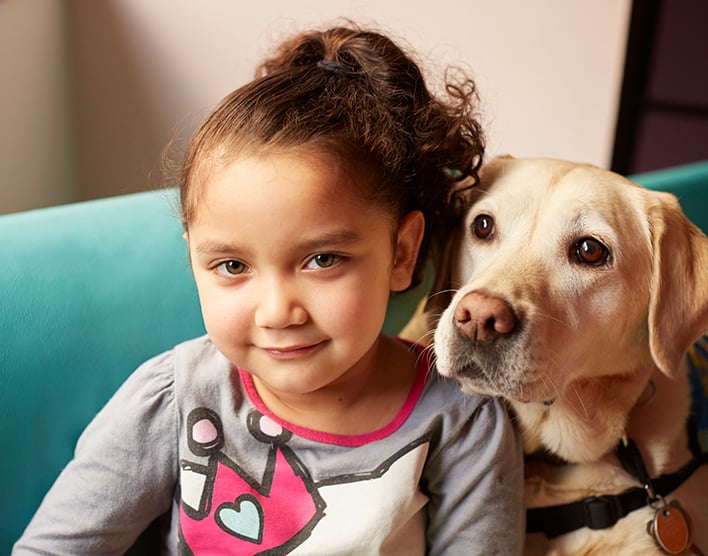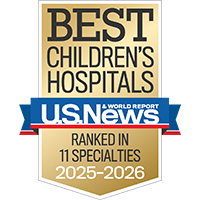Tender wagging care
Our therapy dogs spread joy and smiles at the bedside and throughout the hospital.
Visit Child Life services

Birth asphyxia occurs when a baby doesn't receive enough oxygen before, during or just after birth. There are many reasons that birth asphyxia may occur.
Some of the causes of decreased oxygen before or during the birth process may include:
Factors that may lower oxygen in the baby after birth include:
Low oxygen levels may decrease a baby's heart rate, blood pressure and blood flow out of the heart. This may limit the blood flow to organs and tissues, leading to improper cell function or damage. Organs typically affected by lowered oxygen include the brain, heart and blood vessels, gastrointestinal tract, lungs and kidneys.
Each baby may experience symptoms of birth asphyxia differently. However, the following are the most common symptoms.
Before delivery, symptoms may include:
At birth, symptoms may include:
The following test are used to diagnose birth asphyxia:
Problems with a baby's circulatory, digestive and respiratory systems may also suggest that a baby has birth asphyxia.
Birth asphyxia is a complex condition that can be difficult to predict or prevent. Prompt treatment is important to minimize the damaging effects of decreased oxygen to the baby.
Specific treatment for birth asphyxia is based on:
Treatment may include:
An extracorporeal membrane oxygenation (ECMO) machine may be used for babies who are experiencing serious heart or lung failure. The machine delivers oxygen to the baby's brain and body as temporary support. It works by draining the baby's blood into an artificial lung where oxygen is added and carbon dioxide is removed, then pumping the blood back into the child.
At UCSF Benioff Children's Hospital, we treat over 20 patients each year with ECMO and our success outcomes are among the highest in the country. Our team of experts is specially trained in ECMO and includes a neonatologist, surgeon, respiratory therapists and nurses.
In addition to ECMO, we also offer a wide range of other types of mechanical ventilation and respiratory therapy, including high frequency oscillatory ventilation and inhaled nitric oxide.
UCSF Benioff Children's Hospitals medical specialists have reviewed this information. It is for educational purposes only and is not intended to replace the advice of your child's doctor or other health care provider. We encourage you to discuss any questions or concerns you may have with your child's provider.

Ranked among the nation's best in 11 specialties
Tender wagging care
